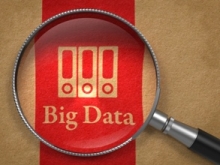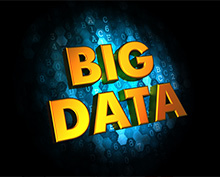A couple of decades ago, data analysts forecasted that data would grow manifold. This forecast has not only been proven right, but has also defined the lifecycle of data management. Indirectly though, but very rightfully, today we know that data is not about to stop.
Big data is getting bigger, and with it the complications in managing data. For many, tools such as Apache Hadoop, MongoDB and NoSQL singularly represent big data. However, a typical big data architecture is not confined to very few such terms. These terms are but components of the big data architecture.
The Basics
It is good to first understand NoSQL prior to understanding Hadoop and MongoDB. A database management framework is considered NoSQL if it does not rely on SQL alone. NoSQL database enables scaling and is simple. NoSQL stores in general, focus on availability and partition tolerance. NoSQL databases do not stand against SQL queries and is relatively cost-effective to implement. Although, these definitely have been gaining popularity, the volume of low-level queries allowed in such databases has been keeping enterprises from fully adopting these.
Apache Hadoop is a software framework that is used to store and process large-scale data. It is an open-source framework and contains individual modules that carry a distributed file system, a resource management platform, a large-scale programming model for data processing and components that provide high-level interfaces. Hadoop framework is mostly Java-based. MongoDB on the other hand is written using C++ and belongs to the NoSQL family. Another difference in MongoDB is its unconventional model that avoids relational database’s table-based structure. MongoDB is known for its ad hoc queries that enable the DBMS to perform granular level searches. MongoDB also features indexing, load balancing, aggregation, replication, and server-side script execution.
Hadoop vs MongoDB
Hadoop, as defined earlier, is a framework designed to process and analyze data. MongoDB on the other hand is a database and is primarily built for data storage and retrieval. However, both Hadoop and MongoDB have components for data processing and scalability.
For a typical environment handling large data, point of failures are important to ensure continued accessibility of the database. Hadoop’s framework relies solely on ‘NameNode’, which is the only point of failure. This is a drawback in using Hadoop because unavailability of NameNode means unavailability of data. MongoDB handles this with its ability to replicate resources. When there is a server/node failure, a replicated resource gets active and keeps the system running.
MongoDB requires data to be in CSV or JSON format to be imported. Hadoop accepts data in most available formats because it uses ‘Pig’ to shape unstructured data and uses ‘Hive’ to process structured data. Both Pig and Hive are used by Hadoop to run MapReduce. MongoDB on the other hand uses rich queries that are used in RDBMSs. MongoDB is cost-effective because it is a single product unlike Hadoop, which is a software suite. This makes the training time and cost involved higher in the case of Hadoop. MongoDB is also efficient in handling memory as it is written in C++. However, it is also important to note Hadoop’s ability in optimizing space utilization, which MongoDB lacks.
Use Cases
Because of its flexibility and simplicity, MongoDB is preferable for processing and managing online data. Its capabilities such as indexing, archiving scalability, etc. makes it ideal for e-commerce, web data storage, and mobile data management. Hadoop would be an excellent choice to process large, offline data. Hadoop’s processing features also make it ideal for environments that need to rely largely on analytics and machine learning. Another important use case of Hadoop framework is in handling unstructured data such as photos, videos and other crowd-sourced data.
To sum up, MongoDB would prove very effective if the desired results are real-time processing, high availability, and lowest latency possible. Hadoop would be a better choice for larger data that requires larger processing and structuring.
Quick Comparison:
| Apache Hadoop | MongoDB |
| Written In: Java | Written In: C++ |
| Open Source: Yes | Open Source: Yes |
| Type: Framework | Type: Database |
| OS: Cross-Platform | OS: Cross-Platform |
| State: Suite of Products | State: Stand-Alone Product |
| Best Application: Large Scale Processing | Best Application: Real-Time Extraction and Processing |
| MapReduce: Available | MapReduce: Available |
| Scalability: Limited | Scalable: Yes |
| NoSQL: No | NoSQL: Yes |
| High Availability: Limited – Only One Failure Point Available | High Availability: Yes – Replication Enabled |
| Storage: File System Available | Storage: File System Available |
| Server-Side Script Execution: Yes | Server-Side Script Execution: Yes |
| Data Structure: Flexible | Data Structure: Only CSV and JSON can be imported |
Conclusion
Handling big data with just a single tool or framework is nearly impossible as stated earlier. That is to say that technologies such as Hadoop and MongoDB must be utilized together. It is recommended that any organization handling big data architecture should use both MongoDB and Hadoop together. Clearly, one way or another both Hadoop and MongoDB are taking the place of conventional RDBMS. With all considerations and suggestions noted, it is also vital to know that neither MongoDB nor Hadoop are built to brag security. Both the technologies are meant to manage large data and both come with excellent features and few drawbacks.

Deepak is a former Happiest Mind and this content was created and published during his tenure.






